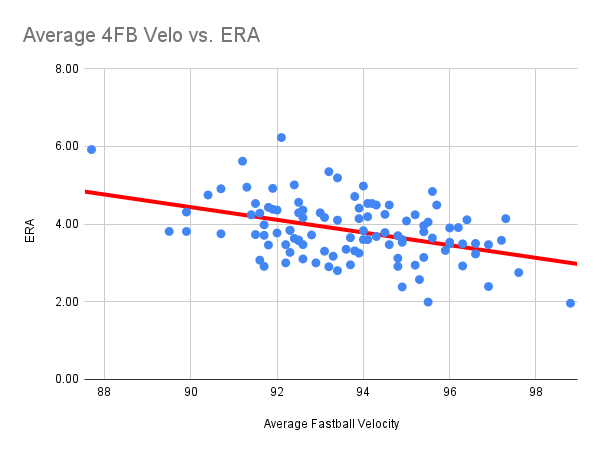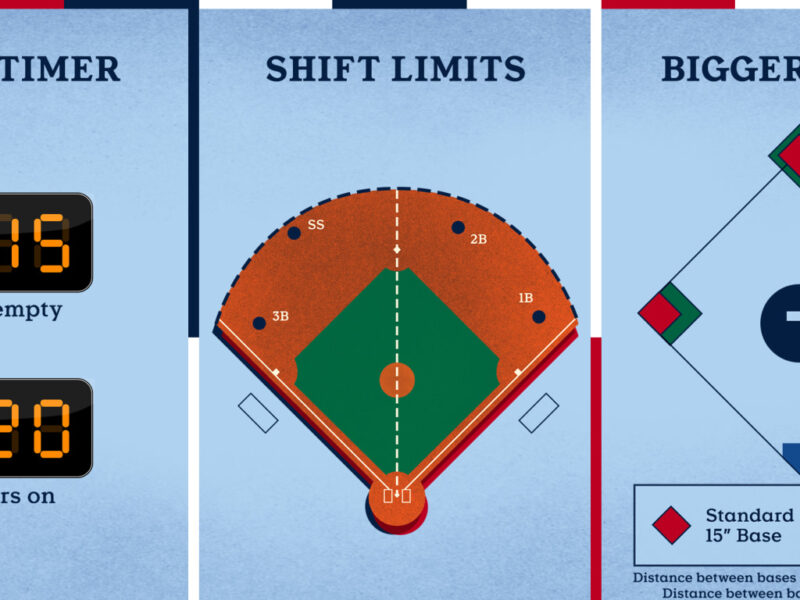The pitcher’s mound has always been the epicenter of baseball strategy, but the art and science of pitching have undergone a revolution unlike anything seen before. Gone are the days when simply “throwing strikes” and mixing speeds were the primary goals. Today’s pitchers are highly optimized athletes leveraging physics and data to push the boundaries of human performance.
This evolution is largely defined by three interconnected elements: the relentless pursuit of velocity, the deep understanding of spin rate, and the resulting shifts in strategy.

1. The Velocity Revolution: Chasing Triple Digits
For decades, hitting 90 mph was the mark of a hard thrower. Today, it’s often below average.
- The Shift: Average fastball velocity across MLB has steadily climbed. Sitting 93-95 mph is now commonplace, and touching 100 mph, while still elite, is far less rare.
- How We Got Here:
- Specialized Training: Year-round, baseball-specific training focusing on kinetic chain efficiency, core strength, and explosive power is the norm. Weightlifting, once discouraged for pitchers, is now essential.
- Biomechanics: Advanced motion capture and biomechanical analysis help pitchers optimize their deliveries for maximum force generation, squeezing out every possible mile per hour.
- Mindset Shift: Pitchers are often trained from a young age to prioritize throwing hard, sometimes leading to a “max effort” approach on every pitch.
- The Impact: Higher velocity gives hitters drastically less time to react, recognize the pitch, and decide to swing. It shrinks the margin for error and makes even straight fastballs incredibly difficult to hit consistently.
2. The Spin Rate Awakening: Making the Ball Dance
Velocity isn’t the whole story. The realization of spin rate’s importance, fueled by technology, has been equally transformative.
- What is Spin Rate?: Measured in revolutions per minute (RPM), it’s how fast the baseball is spinning as it travels to the plate. Crucially, the axis of that spin also dictates movement.
- Why It Matters:
- Fastballs: High backspin creates more lift (Magnus Effect), making the fastball appear to “rise” or resist gravity longer than expected. This leads to swings-and-misses under the ball, especially effective up in the strike zone.
- Breaking Balls: High spin rates on curveballs and sliders generally lead to sharper, later, and more significant break, making them much harder to hit. Low-spin “gyro” sliders or cutters have their own unique, deceptive movement patterns.
- The Catalyst: Technology & Analytics: Doppler radar systems (TrackMan, Statcast) and high-speed cameras (Rapsodo, Edgertronic) allowed teams and players to accurately measure spin rate and axis for the first time. This data revealed spin’s massive impact on pitch effectiveness.
- The Impact: Pitchers now actively work to optimize spin. “Pitch design” sessions focus on grip adjustments, pressure points, and release techniques to maximize beneficial spin. This has led to the refinement of sliders (“sweepers”), cutters, and curveballs, often tailored to tunnel effectively off high-spin fastballs. It also led to the controversial “sticky stuff” saga, as pitchers sought artificial means to enhance grip and spin.
3. Strategic Shifts: Adapting to the New Arsenal
The combination of elite velocity and optimized spin has fundamentally changed how pitchers attack hitters and how teams manage their pitching staffs.
- Rise of the High Fastball: The high-spin, high-velocity fastball thrown at the top or above the strike zone has become a primary weapon, countering modern hitters’ uppercut swings designed for launch angle.
- Breaking Ball Dominance: Pitchers throw breaking balls (sliders, curveballs, sweepers) more often than ever before, sometimes exceeding fastball usage. These pitches, often featuring high spin rates, are elite swing-and-miss weapons.
- Reliever Specialization & “Bullpenning”: Starting pitchers often aren’t expected to go deep into games. Instead, teams deploy a stable of high-octane relievers, each throwing max effort for an inning or two. These relievers often feature elite velocity and/or devastating breaking pitches, making late innings incredibly difficult for hitters. Concepts like “openers” further blur traditional roles.
- Data-Driven Game Planning: Pitch selection and location are heavily influenced by analytics. Teams exploit hitter weaknesses using heat maps, spray charts, and detailed reports on swing-and-miss rates against specific pitch types and locations.
The Double-Edged Sword: Injuries and Offense
This evolution hasn’t come without costs. The relentless pursuit of velocity and spin, coupled with max-effort deliveries, is widely believed to be a major contributor to the alarming rise in pitcher arm injuries, particularly Tommy John surgeries requiring elbow ligament replacement.
Furthermore, the dominance of modern pitching has impacted the game itself, contributing to increased strikeout rates, fewer balls in play, and debates about the overall pace and action of the sport. Rule changes like the pitch clock and limitations on defensive shifts are, in part, attempts to counterbalance the overwhelming effectiveness of today’s pitchers.
Conclusion: The Arms Race Continues
Pitching in Major League Baseball is more sophisticated, scientific, and physically demanding than ever before. Velocity and spin rate aren’t just buzzwords; they are fundamental pillars of modern pitching strategy, dictating everything from training regimens to in-game tactics. While the injury concerns are real and significant, the relentless pursuit of maximizing every pitch continues. The cat-and-mouse game between pitcher and hitter evolves constantly, fueled by data, technology, and the incredible athletic capabilities of today’s hurlers.
What aspect of modern pitching evolution do you find most fascinating or concerning? Share your thoughts in the comments below!

